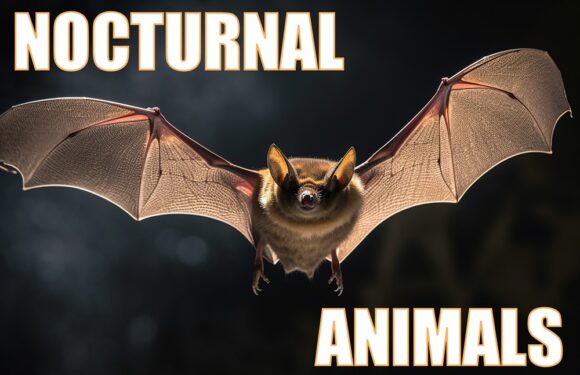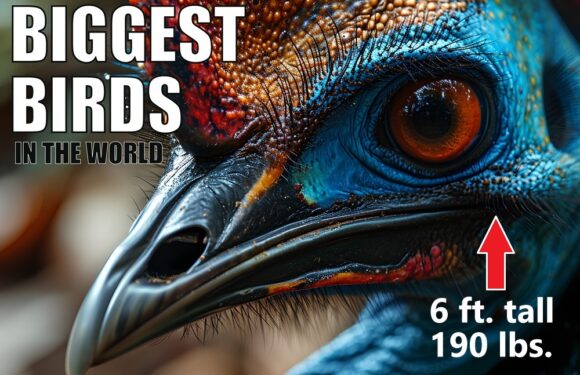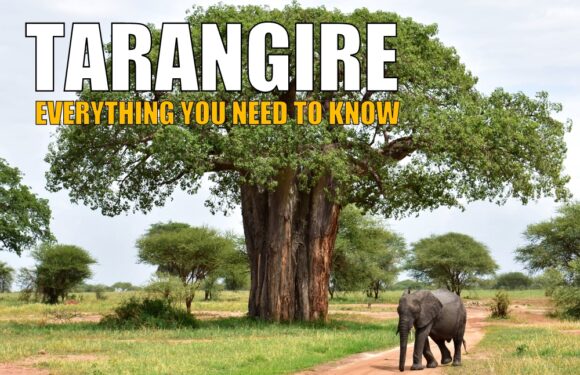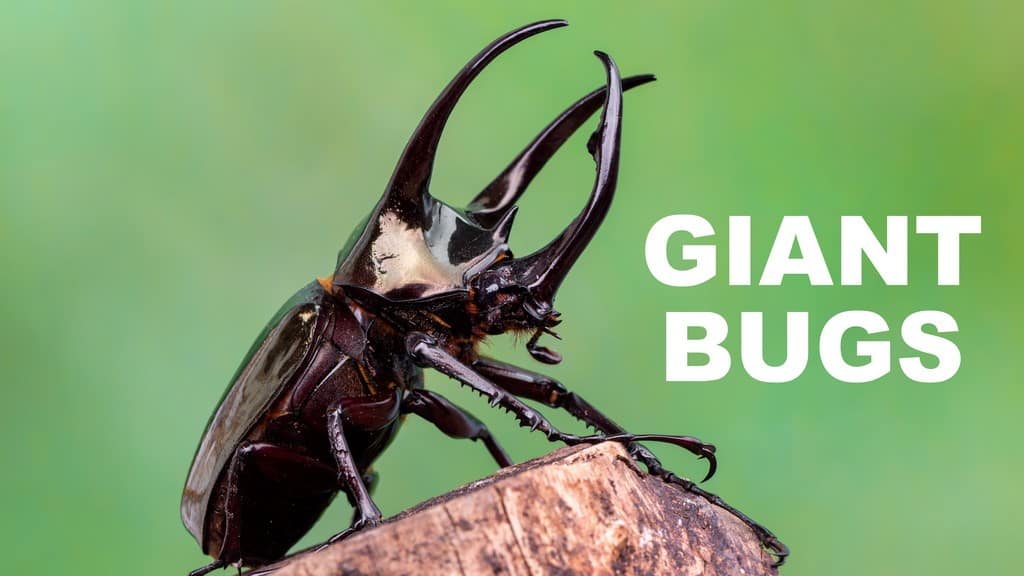
The insect kingdom is comprised of millions of species ranging from the minutely small to the surprisingly large. In this article, we’ll take a look at the biggest bugs on earth.
Why Do Some Insects Grow So Large?
The size of an insect can be influenced by various factors, including environmental conditions, availability of resources, and evolutionary pressures. In regions with abundant food sources and fewer predators, insects can afford to grow larger. Additionally, higher oxygen levels in the environment enable insects to grow significantly larger.
Larger insects often have advantages such as increased mobility, better mate selection, and improved defensive capabilities. However, their size also makes them more visible to predators and requires more resources to maintain.
The World’s 15 Biggest Insects
1. Giant Stick Insect (Phobaeticus serratipes)
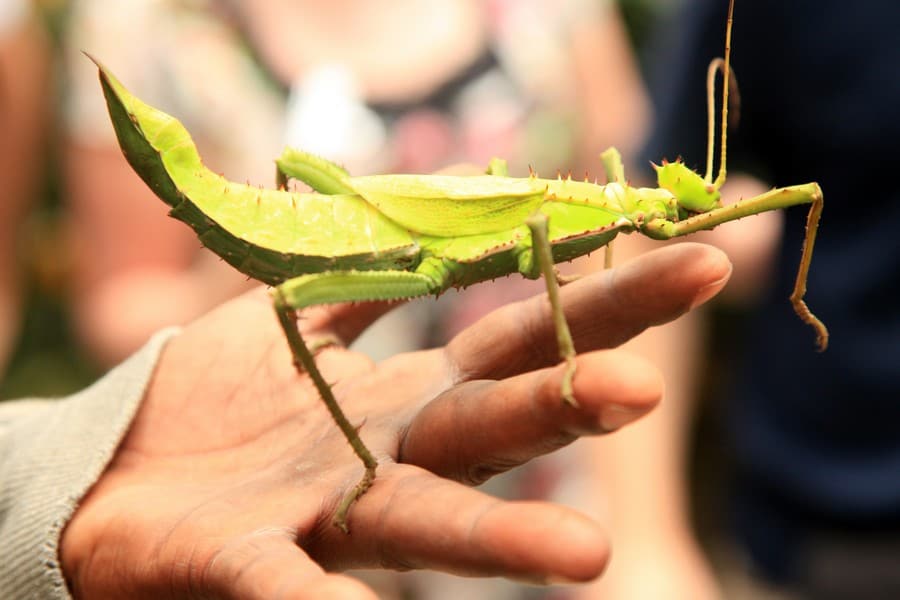
The Giant Stick Insect is the longest insect in the world, with specimens recorded at over 22 inches (56 cm) including their legs. These insects are masters of camouflage in their native forests of Borneo, perfectly mimicking the twigs and branches of their habitat to evade predators. Their diet consists primarily of leaves, and they lead a largely sedentary lifestyle, further aiding their disguise. The Giant Stick Insect’s elongated body and slow movements make it an intriguing subject of study, offering insights into the evolutionary advantages of mimicry in insects.
2. Titan Beetle (Titanus giganteus)
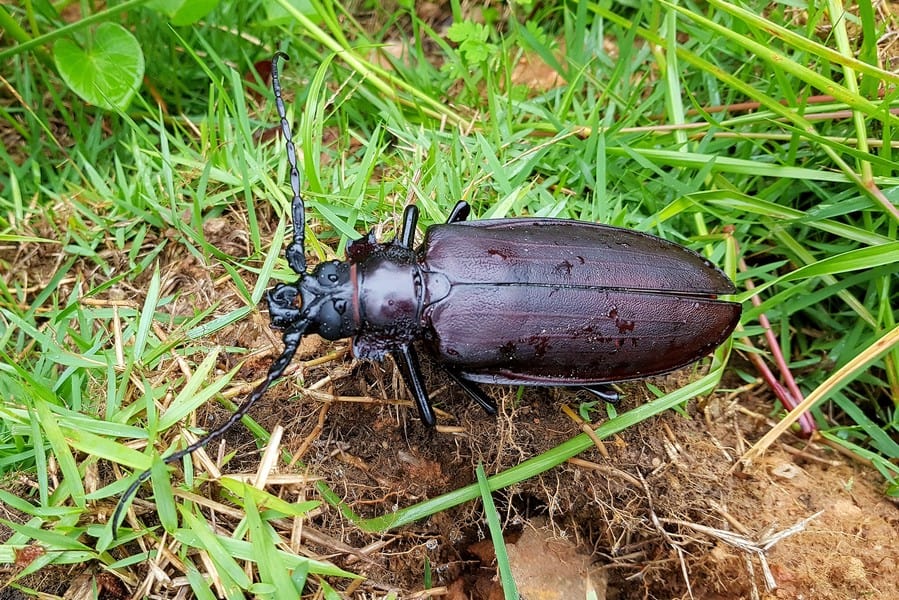
The Titan Beetle is a massive beetle, reaching up to 6.6 inches (167 mm) in length. It lives in the Amazon rainforest. This beetle’s powerful mandibles are capable of snapping pencils in half and piercing human flesh! Despite its fearsome appearance, the adult Titan Beetle does not eat; instead, it relies on energy reserves built up during its larval stage. The larvae are believed to feed on decaying wood below the ground and can take several years to develop.
3. Goliath Beetle (Goliathus goliatus)
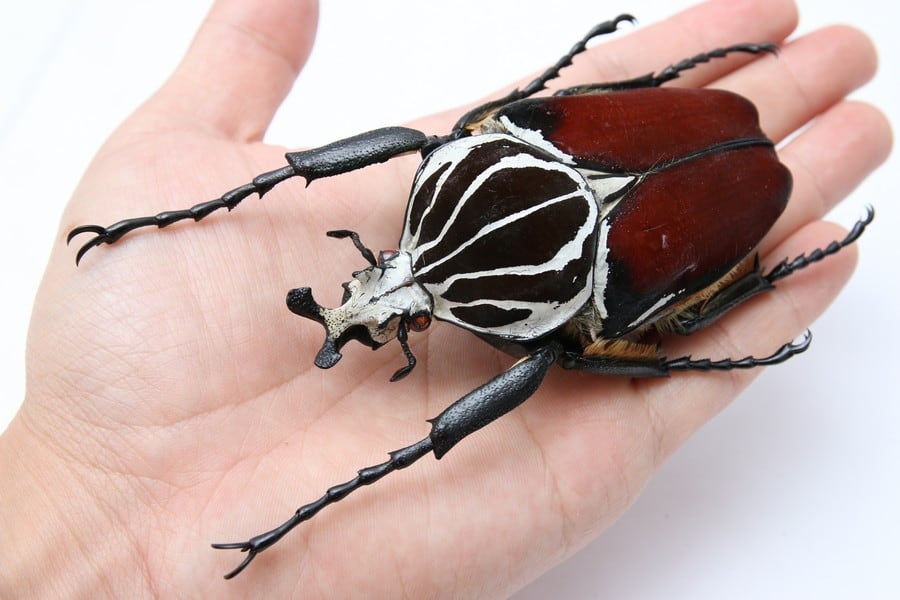
The Goliath Beetle is one of the biggest and heaviest insects in the world. Adults can reach lengths of up to 4.3 inches (110 mm) and weigh more than 3.5 ounces (100 grams) in their larval stage. The adult’s diet consists mainly of tree sap and fruit. The Goliath Beetle’s size is a result of the abundant resources in Africa’s tropical forests, . These beetles have striking patterns and coloration, which vary significantly between individuals. The Goliath Beetle is also very strong, able to objects up to 850 times its weight.
4. Hercules Beetle (Dynastes hercules)

The Hercules Beetle is a species of rhinoceros beetle that is native to the rainforests of Central and South America. These bugs were named after Hercules, the legendary hero in Greek mythology, due to their size and strength. The males have impressive horns that can make up half its 6.7 inch (170 mm) body length. The horn is used in battles with rivals over territory and mates. The Hercules Beetle feeds on fruit and sap, leading a relatively peaceful existence aside from its combative mating rituals.
5. Giant Weta (Deinacrida heteracantha)
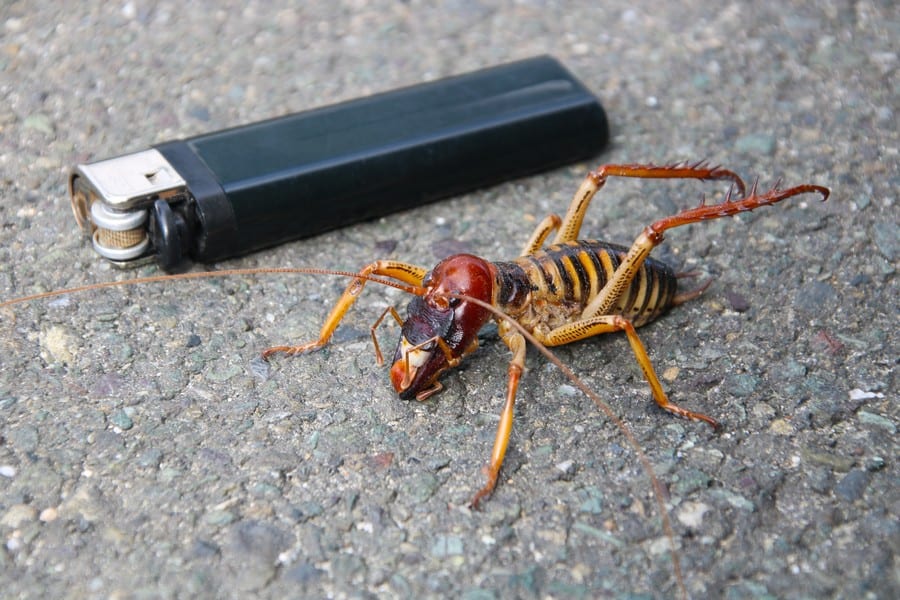
A Giant Weta holds the Guiness World Record for the heaviest verified weight for any specimen of insect in the world, at 2.5 ounces (71 grams). This species evolved in New Zealand in the absence of mammals, leading to its large size and ground-dwelling habits. The Giant Weta is a nocturnal insect, feeding on leaves, flowers, and fruit. Its large size makes it vulnerable to the country’s introduced predators, such as rats and cats. Conservation efforts are critical for the Giant Weta and its island ecosystems.
6. Queen Alexandra’s Birdwing (Ornithoptera alexandrae)
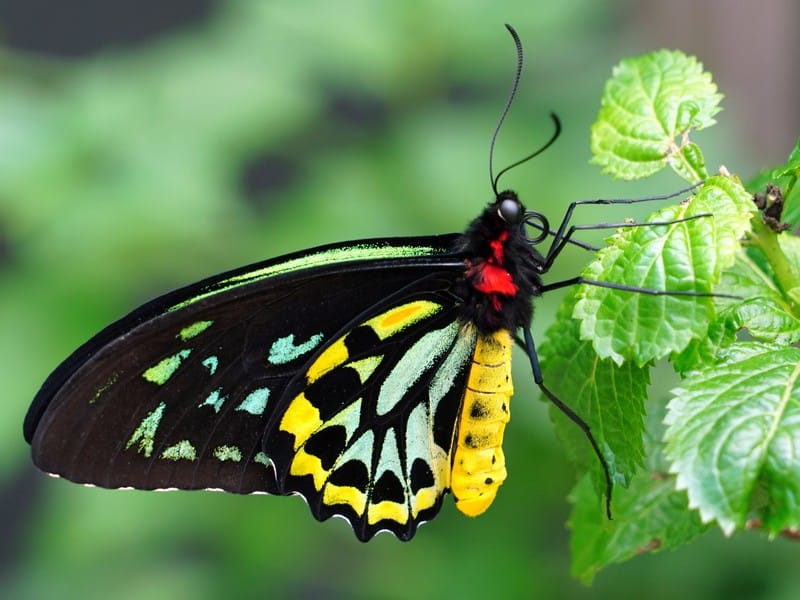
Queen Alexandra’s Birdwing is the world’s largest butterfly by wingspan, reaching up to 1 foot (30 cm). Native to the rainforests of Papua New Guinea, this species faces threats from habitat destruction due to palm oil plantations. The butterfly’s vibrant colors and enormous size make it a target for collectors, further endangering its population. Conservation efforts are in place to protect its habitat and ensure their survival. The female birdwing is larger than the male and lacks the vibrant blue and green coloration that males display.
7. Atlas Moth (Attacus atlas)

The Atlas Moth is the largest moth in terms of total wing area. It has a wingspan of up to 11.8 inches (300 mm). Found in the forests of Southeast Asia, this moth does not have a mouth and cannot eat. It lives only a few days as an adult. Its entire life is dedicated to reproduction, with the female laying up to 400 eggs after mating. The caterpillars are voracious eaters, consuming large amounts of foliage before pupating. The moth’s name derives from the patterns on its wings, which resemble maps. The Atlas Moth’s cocoon is spun from a silk that is strong and durable, offering potential for textile use.
8. Actaeon Beetle (Megasoma actaeon)

The Actaeon Beetle is a species of rhinoceros beetle found in the Amazon rainforest. These giants can reach lengths of up to 5 to 7 inches (13 to 18 centimeters). They thrive in warm, humid environments with plenty of decaying plant matter, which serves as food for the larvae. They are primarily nocturnal creatures, spending the daylight hours hidden under logs or in the dense understory of the forest. The life cycle of the Actaeon Beetle, from egg to adult, can span several years, with much of this time spent in the larval stage.
9. Elephant Beetle (Megasoma elephas)
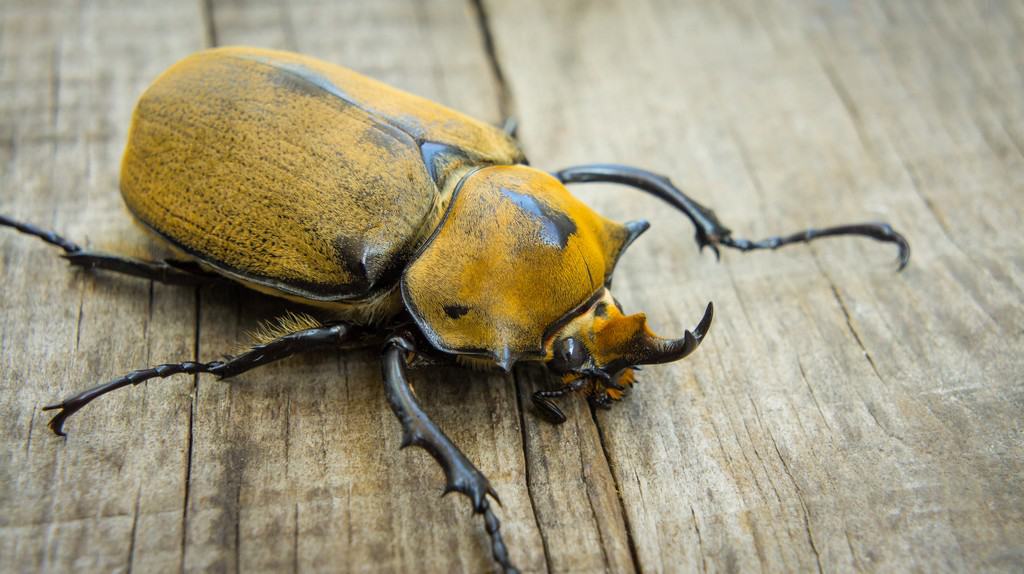
The Elephant Beetle can grow up to 4.7 inches (120 mm) in length. From Central and South America boasts, these beetles are black or dark brown. The males sport large horns used to joust with rivals for mating rights. Their larval stage can last up to three years, feeding on decaying plant matter, before they pupate into the adult form. Elephant Beetles are harmless to humans and are often sought after by collectors for their interesting appearance.
10. Giant Water Bug (Lethocerus americanus)

The Giant Water Bug, also known as the toe-biter or electric light bug, can grow up to 4 inches (10 cm) in length. Found in ponds and streams across North and South America, it is one of the largest aquatic insects in the world. These predators are equipped with strong front legs used to grasp prey, which includes fish, amphibians, and even small birds. Their bite is considered one of the most painful that can be inflicted by any insect, but they only bite humans in self-defense. The female lays her eggs on the male’s back, where he carries them until they hatch.
11. Giant Long-Legged Katydid (Macrolyristes corporalis)
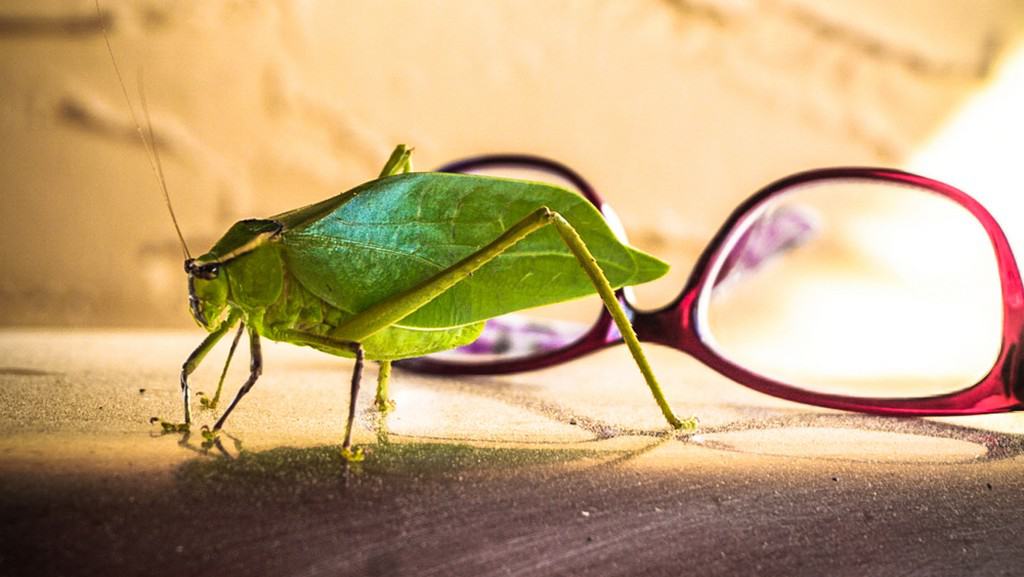
The Giant Long-Legged Katydid has a body that can reach lengths of up to 4 inches (10 cm). They have exceptionally long legs compared to their body size, which makes them proficient jumpers. Found in tropical forests of Southeast Asia, these nocturnal insects are typically green to brown in coloration, which helps them blend into their surroundings. They feed on a variety of plants and are known for their loud, chirping calls, used by males to attract females.
12. Giant Burrowing Cockroach (Macropanesthia rhinoceros)

Native to Australia, the Giant Burrowing Cockroach is the world’s heaviest cockroach, with some individuals weighing up to 1.2 ounces (35 grams) and measuring up to 3.3 inches (85 mm) in length. Unlike their urban cousins, these cockroaches are not considered pests but beneficial decomposers, feeding on dead leaves and wood. They live underground, where they dig extensive burrows. Known for their gentle nature, these cockroaches are sometimes kept as pets and can live up to 10 years, making them one of the longest-living insect species.
13. Tarantula Hawk Wasps (Pepsis spp.)

The Tarantula Hawk Wasp is known for its excruciating sting, considered one of the most painful in the insect world. Their name comes from their surprising hunting behavior; they prey on tarantulas. The female wasp paralyzes a tarantula with her sting and lays an egg on its abdomen; the hatched larva will then feed on the still-living spider. These wasps help control tarantula populations and maintain ecological balance. Tarantula Hawk Wasps are not aggressive towards humans unless provoked. They can reach lengths of up to 2.5 inches (65 mm).
14. Wallace’s Giant Bee (Megachile pluto)
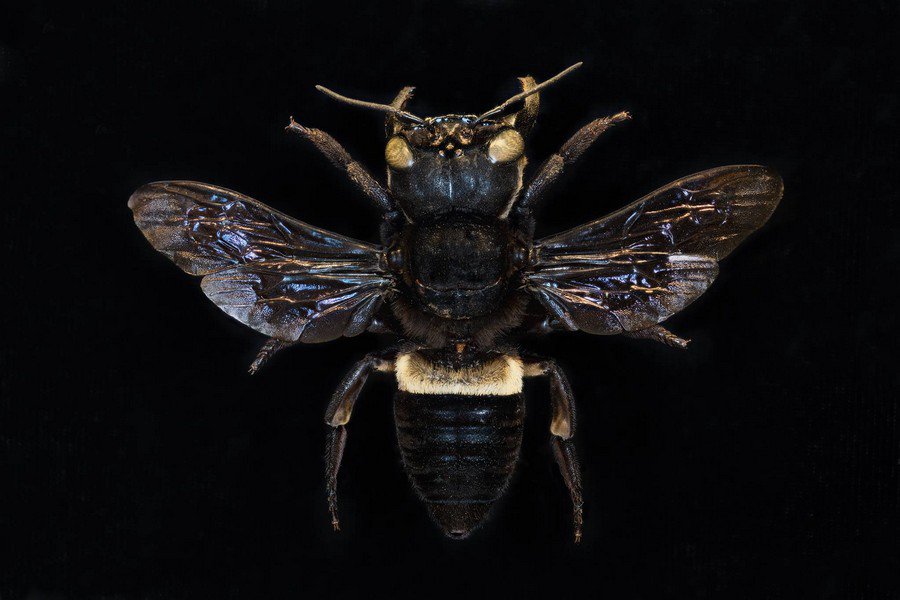
Wallace’s Giant Bee is the largest known species of bee. It has a wingspan of approximately 2.5 inches (63 mm). This species was thought to be extinct, but was rediscovered in Indonesia in 1981. Named after the naturalist Alfred Russel Wallace, who discovered the species in the 19th century, this bee is distinguishable by its enormous size and the large mandibles of the female. The females uses its jaws to gather resin for her nest, which are constructed inside active termite mounds.
15. Japanese Giant Hornet (Vespa mandarinia japonica)

The Japanese Giant Hornet is the world’s largest hornet, with queens reaching lengths of up to 2 inches (5 cm) and a wingspan of approximately 3 inches (7.6 cm). This predator has potent venom, which is capable of dissolving human tissue. It can cause allergic reactions or even fatalities in some serious cases. The hornet’s striking yellow and black coloring make it easily identifiable. Found predominantly in Japan, these hornets are apex predators, preying on other insects such as bees and mantises. A small group of Japanese Giant Hornets can decimate an entire honeybee hive in a matter of hours.
How Big Were Prehistoric Insects?
Insects reached their largest sizes during the late Paleozoic Era, specifically in the Carboniferous and Permian periods, approximately 359 to 252 million years ago. This era is sometimes referred to as the “Age of the Insects.” The oxygen levels during the Carboniferous period were significantly higher than today’s atmosphere, with concentrations up to 35%, compared to the current level of approximately 21%.
The increased oxygen levels are believed to have facilitated the growth of insects to gigantic proportions, owing to the way oxygen is diffused through their bodies via a system of tracheae. This system limits their size under current atmospheric conditions but would have allowed them to grow much larger with higher oxygen availability.
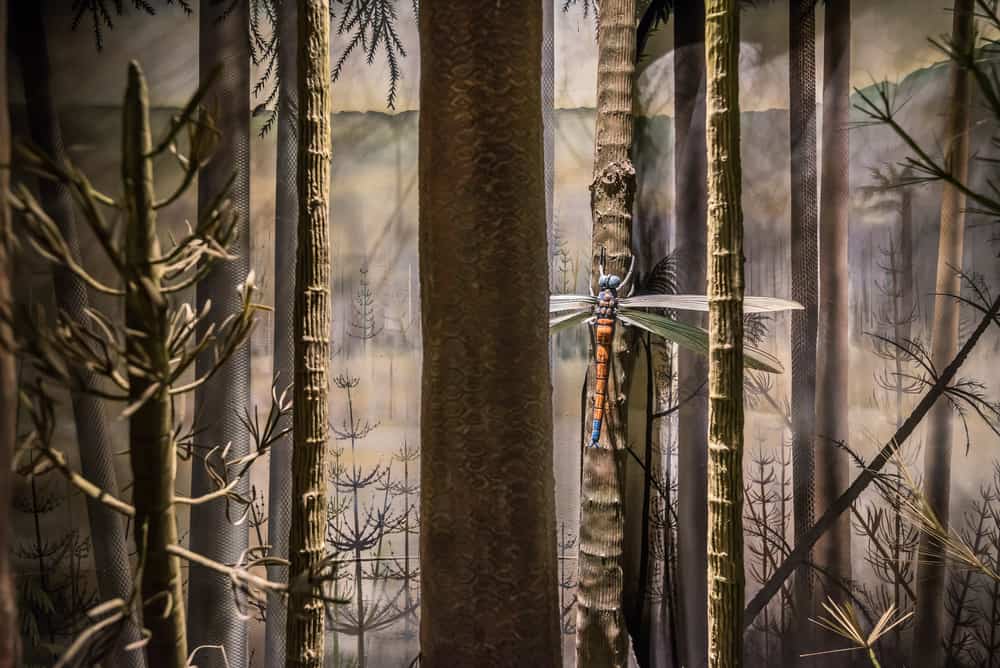
One of the most iconic giant insects from this time is Meganeura, a genus of dragonfly-like insects, with wingspans reaching up to 2.5 feet (about 75 cm). Another example is Arthropleura, which was not an insect but a millipede-like arthropod, and could grow up to 8.5 feet (about 2.6 meters) long, making it one of the largest known land invertebrates of all time.
The decline in atmospheric oxygen and the rise of birds and other predators are among the factors believed to have contributed to the reduction in insect sizes after the Paleozoic Era.





















































